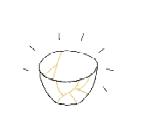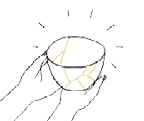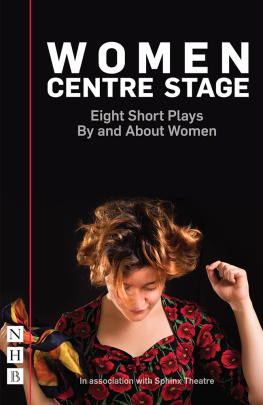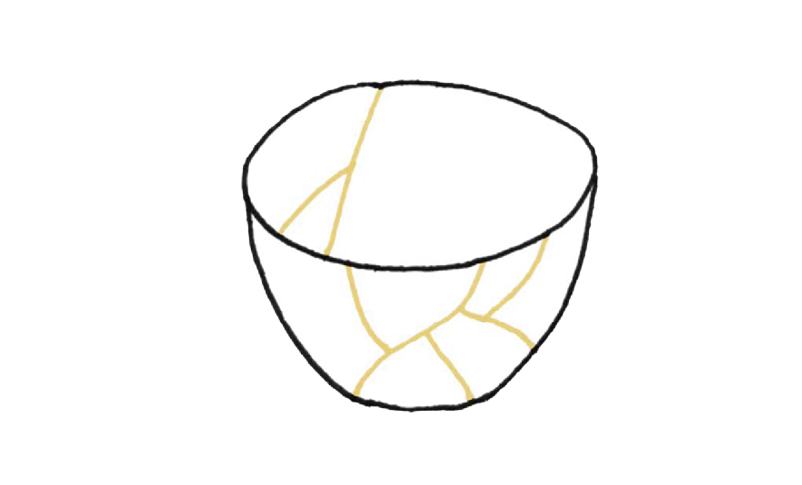To my two wonderful ex-husbands,
without whom this book wouldve never existed.
Kintsugi: Finding Strength in Imperfection
This edition 2019 by Andrews McMeel Publishing.
All rights reserved. No part of this book may be used or reproduced in any manner whatsoever without writtenpermission except in the case of reprints in the context of reviews.
Published in French under the title Kintsugi: Lart de la r silience
2018 by ditions First, an imprint of di8, 12, Avenue dItalie, 75013 Paris, France
Andrews McMeel Publishing
a division of Andrews McMeel Universal
1130 Walnut Street, Kansas City, Missouri 64106
www.andrewsmcmeel.com
ISBN: 978-1-5248-5500-0
Library of Congress Control Number: 2018961304
Editor: Mathilde Poncet
Designer: KN Conception
Illustrations: Caroline Donadieu
Photography: Myriam Greff, except for Cline Santini
Production Editor: Elizabeth A. Garcia
Production Manager: Tamara Haus
Digital Production: Kristen Minter
ATTENTION: SCHOOLS AND BUSINESSES
Andrews McMeel books are available at quantity discounts with bulk purchase for educational, business, or sales promotional use. For information, please e-mail the Andrews McMeel Publishing Special Sales Department: .
CONTENTS








Introduction
Discover
kura yakete / sawaru mono naki / tsukimi kana
My storehouse burnt down,
there is nothing to obstruct
the moon view.
Mizuta Masahide
(1657 1723)
Explore
Blessed are the cracked, for they will let the light through.
Michel Audiard
This book invites you to discover and explore the art of kintsugi in all its facets. This ancestral technique, developed in Japan during the fifteenth century, consists of repairing a broken object by accentuating its cracks with goldinstead of hiding them. But the philosophy behind it goes much deeper than a simple artistic practice. It has to do with the symbolism of healing and resilience. First taken care of and then honored, the broken object accepts its past and paradoxically becomes more robust, more beautiful, and more precious than before it was broken. This metaphor can provide insight into all stages of healing, whether the ailment is physical or emotional.
The word kintsugi comes from the Japanese kin (gold) and tsugi (joint), literally meaning golden joint. The art of kintsugi is named kintsukuroi , which means mending with gold. It is a long and extremely detailed process, executed in numerous stages, lasting several weekseven months. In some cases, it might even take a year to achieve the best kintsugi.
The shards of the broken object are first gathered one by one and then gently cleaned. Then they are glued back together using a traditional lacquer from the Japanese lacquer tree. The object is left to dry, and then its carefully sanded. Next, the cracks are accentuated with multiple coats of lacquer. Finally, the scars are covered with a metallic powder. Gold powder, or any other powdered metal (silver [ gintsugi technique], bronze, brass, copper), is dusted on the moist lacquer and melds into it, giving the illusion of streams of flowing metal. After polishing, the object can finally reveal its full brilliance.
Legend has it that the shogun Ashikaga Yoshimasa (14351490) always used his favorite tea bowl ( chawan ) for tea ceremony. One day, unfortunately, the bowl broke. Since it had originally come from China, he sent the bowl back there to be repaired. He was, however, extremely disappointed by the result. After waiting many months, the bowl was returned held together with ugly metal clasps that not only disfigured it but also failed to make it watertight. So he asked his Japanese artisans to find a more functional and more aesthetically pleasing solution: The art of kintsugi was born...
What an elegant, creative, and simple solution, all in one! Most people who discover the art of kintsugi have an epiphany and fall in love with it at first sight.
The skill is therefore very much in demand. The art of kintsugi is so valued that some connoisseurs have even been known to intentionally break their precious vases or bowls in order to transform them... Without going through the trouble of smashing all your valuables, you can be inspired by the kintsugi philosophy through all the different stages of your personal healing process until you rediscover your wholeness and radiance. Like a living kintsugi, you too can be transformed and strengthened by hardship.
Embrace a life of golden beauty. Discover the spirit of kintsugi.
Wabi-Sabi , Another Idea of Beauty...
Kintsugi also fits into the Japanese concept of wabi-sabi ( wabi : humility in the face of natural events; sabi : what one feels about the work of time or humanity), inviting you to recognize the beauty of simple, imperfect, and atypical things.
By opening yourself to wabi-sabi , you swim against the tide of standardized and artificial modern ideals. Wabi-sabi invites contemplation and detachment, rather than perfection. It emphasizes the irreversibility of time and the ephemeral nature of all. It reminds us to appreciate the humble beauty of simple things, patinated by time and the trials of life.
EXPERIMENT
Art helps with living.
ric-Emmanuel Schmitt
Kintsugi is the art of exalting past injuries. The Way of Kintsugi can be understood as a kind of art therapy, inviting you to transcend your struggles and transform your personal hardships into gold. It reminds you that your scars, visible or invisible, are proof that youve overcome your difficulties. By marking your history, they demonstrate youve survived, and they enrich your soul.
Even more beautiful,
























